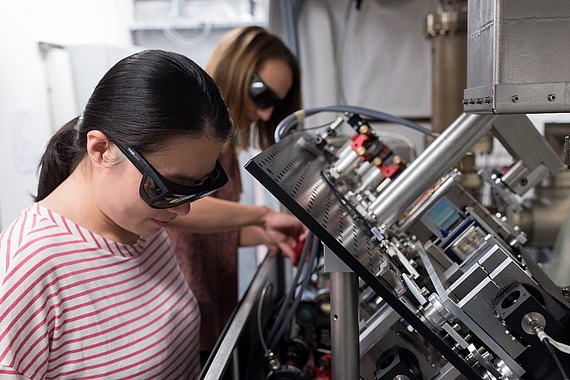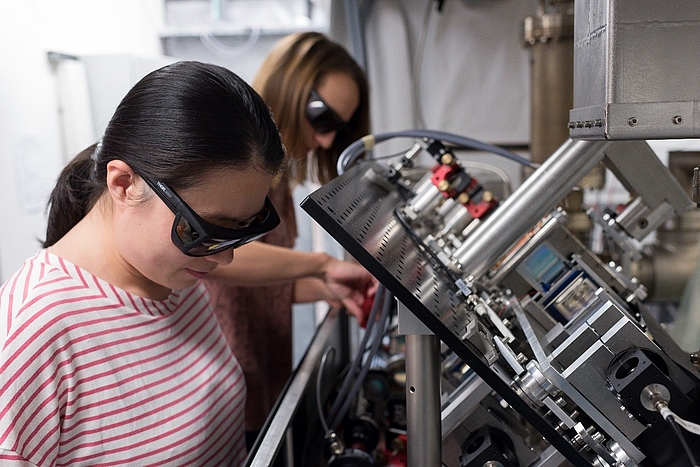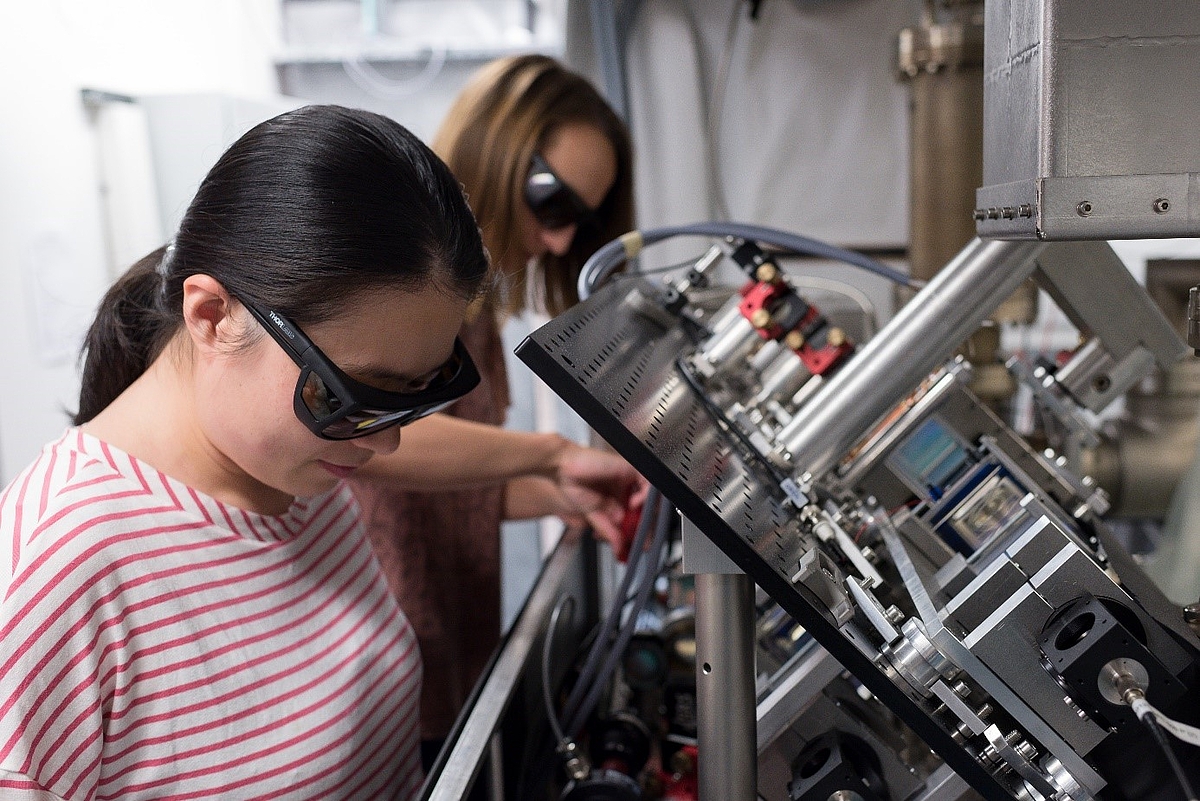


Introduction
Atom interferometers belong to today’s most precise sensors with broad applications for navigation, geodesy, time keeping as well as fundamental research. Typically, they are operated with uncorrelated particles, resulting in a fundamental limitation of the achievable sensitivity – the standard quantum limit (SQL). While the SQL allows improving the sensitivity by increasing the particle number, we have shown in the second funding period in collaboration with B07 (delocalised states) that quantum density fluctuations place a limit to this improvement, leading to an optimal atom number and a corresponding sensitivity limit, the density quantum limit (DQL). Both sensitivity limits can only be overcome by employing entangled particles as an input for new types of non-classical interferometers. However, up to now, only few proof-of-principle experiments have actually succeeded to exploit entangled sources of atoms for interferometric measurements. In this project, we advance our method from demonstration experiments to a valuable source for a future generation of highest-sensitivity atomic sensors.
Results
Within the second funding period, we have achieved important goals in this direction. We decreased the generation time of Rb Bose-Einstein condensates (BECs) to a world-record of 500 ms by employing dynamically shapeable optical potentials. Short BEC generation times are equally important for interfer- ometry with high duty cycles and for performing quantum state tomography for entangled many-body quantum states. We improved our detection system for single-particle resolved counting of up to 700 atoms. The novel detection has enabled us to perform a first single-atom resolved state tomography with a coherent spin state, that was generated on the Rb clock transition. Finally, we have just reached a ma- jor milestone in the lab by analysing a two-mode squeezed vacuum state with single-particle resolution.
The two-mode squeezed state is characterised by the generation of particle pairs, and prominent odd- even oscillations in the total atom number, all of which are now directly observable in our experiments. The two-mode squeezed state is a preferable input state for entanglement-enhanced interferometry, as we have shown within A02 (non-Gaussian atomic states). Here, we demonstrated the operation of a Ramsey sequence on the Rb clock transition beyond the SQL with long Ramsey times of up to 7 ms, solely limited by the available spatial region. Based on the development of a high-performance Raman laser system in collaboration with B07, the clock sequence was extended to a full atom interferomet- ric gravimeter. We have first results for an absolute gravimeter that enables a measurement of the gravitational acceleration with a resolution beyond the SQL, for the first time worldwide.
Publications
Showing results 1 - 9 out of 9
Project leader
30167 Hannover
30167 Hannover
Staff
30167 Hannover

